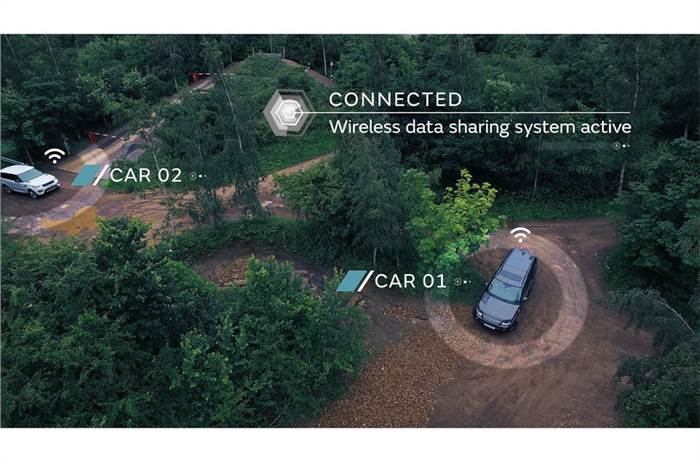Jaguar Land Rover is working on a raft of technology that could enable its future production cars to drive autonomously off-road as well as on-road.
The research project aims to make JLR’s self-driving cars viable in a wide range of on- and off-road driving environments and conditions. To enable autonomous all-terrain capability, JLR is working on new sensing technologies to provide the high levels of artificial intelligence required for the car to plan the route it should take.
New surface identification and 3D path-sensing systems use camera, ultrasonic, radar and lidar sensors to give the car a 360-degree view of the world around it. JLR says the combined power of the sensors is so advanced that the car could determine road surface characteristics, down to the width of a tyre, even in rain and falling snow, to plan its route.
Tony Harper, head of research for JLR, said, “We don’t want to limit future highly automated and fully autonomous technologies to tarmac. When the driver turns off the road, we want this support and assistance to continue. He continued, “In the future, if you enjoy the benefits of autonomous lane keeping on a motorway at the start of your journey, we want to ensure you can use this all the way to your destination, even if this is via a rough track or gravel road. So whether it’s a road under construction with cones and a contraflow, a snow-covered road in the mountains or a muddy forest track, this advanced capability would be available to both the driver and the autonomous car, with the driver able to let the car take control if they were unsure how best to tackle an obstacle or hazard ahead.”
Ultrasonic sensors can identify surface conditions by scanning up to five metres ahead of the car, so the settings of JLR’s Terrain Response system could be automatically changed before the car drives from one surface to another. This will optimise all-terrain performance without loss of momentum or control.
To complete the 3D path, branches overhanging a track, or a car park overhead barrier would also need to be identified to determine if the route ahead is clear. Harper said, “The key enabler for autonomous driving on any terrain is to give the car the ability to sense and predict the 3D path it is going to drive through. “This means being able to scan and analyse both the surface to be driven on, as well as any hazards above and to the sides of the path ahead. This might include car-park barriers, tree roots and boulders or overhanging branches, as well as the materials and topography to be driven on.”
Overhead Clearance Assist uses stereo camera technology to scan ahead for overhead obstructions. The driver programmes the system with the vehicle’s height, which can include roof boxes or bicycles, and the car will warn the driver with a simple message in the infotainment touchscreen if there is insufficient clearance.
Another system being researched is called terrain-based speed adaption (TBSA). It uses cameras to sense bumpy terrain including uneven and undulating surfaces, potholes or standing water. It predicts the potential impact of these surfaces on the car’s ride and automatically adjusts speed to keep passengers comfortable. JLR is also working on Off-Road Connected Convoy, a system that links vehicles together using Dedicated Short Range Communications technology.
The system shares information including vehicle location, wheel-slip, changes to suspension height and wheel articulation, as well as All-Terrain Progress Control (ATPC) and Terrain Response settings instantly between vehicles.
The manufacturer has successfully demonstrated the so-called vehicle-to-vehicle (V2V) communications system by connecting two Range Rover Sports together. Harper said, “This V2V communications system can seamlessly link a convoy of vehicles in any off-road environment. If a vehicle has stopped, other vehicles in the convoy will be alerted – if the wheels of drop into a hole, or perhaps slip on a difficult boulder, this information is transmitted to all of the other vehicles.
“In the future, a convoy of autonomous vehicles would use this information to automatically adjust their settings or even change their route to help them tackle the obstacle.” JLR hasn’t stated when it anticipates the new systems could be mature enough to bring to market on its production vehicles. Last summer the company revealed technology to allow drivers to control their cars via a smartphone app.






Comments
Member Login
Personal Details
No comments yet. Be the first to comment.